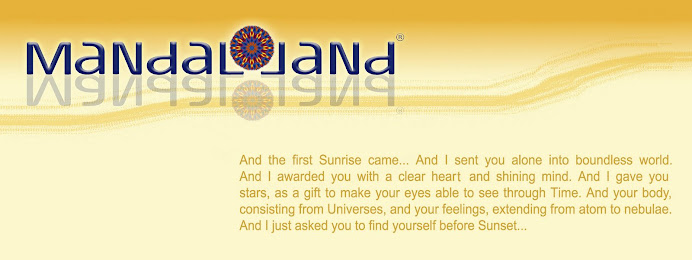WALL MANDALAHello, Dear readers!
Today I will introduce an unusual story about collective mandala drawing. As I said earlier, the application scope of mandala is boundless, and all depends of your imagination and courage. The more you’ll be open and freedom creative, the more interesting result will be and, of course mandala itself.
Mandalas can be created from almost anything. You can paint them, draw, caparison, roast, create in computer, make appliques, sculpture of colored plasticine, spread them on the land with flowers, create from colored sand, gather from any things, drawing finger on weeping glass, in general, just materialize mandalas of all that comes to mind. It doesn’t matter, could you paint or something to do by hands. Everyone is able to create a mandala. The whole secret is, just start to do it. You don’t believe it? Ok. Try it yourself! And then you’ll tell me:)
Besides, it’s incredibly interesting and exciting process. I can say it for myself, when you begin to create mandala, escape from this almost impossible. It’s like to merge with it together. All become secondary, except mandala and you.
I can say certainty, that mandala is living being. Once the mandala is born, it begins to live its own life. Being in the space of your home, it eliminates all the negative influences and fills its peace and harmony. The house has become warmth and coziness.
And now, go back to the story. As I said above, mandalas can be made from anything and anywhere. So I with my friends decided to draw a large mandala on the wall in their home living room. The idea was born spontaneously. First, we rule mandala on the wall, and then began to apply paint. Morning started, and late night mandala was ready. Do not see the point to describe process fully, pictures will tell everything and even more.
Inspire! Be bold, create and draw by yourself!
Love and peace.
I AM WITH PAINTBRUSH MY FRIEND
MY FRIEND PAINTING MANDALA TOGETHER
PAINTING MANDALA TOGETHER FINISHED MANDALA
FINISHED MANDALA MANDALA PALETTE
MANDALA PALETTE 4 COLORS
4 COLORS 2 COLORS
2 COLORS


















































